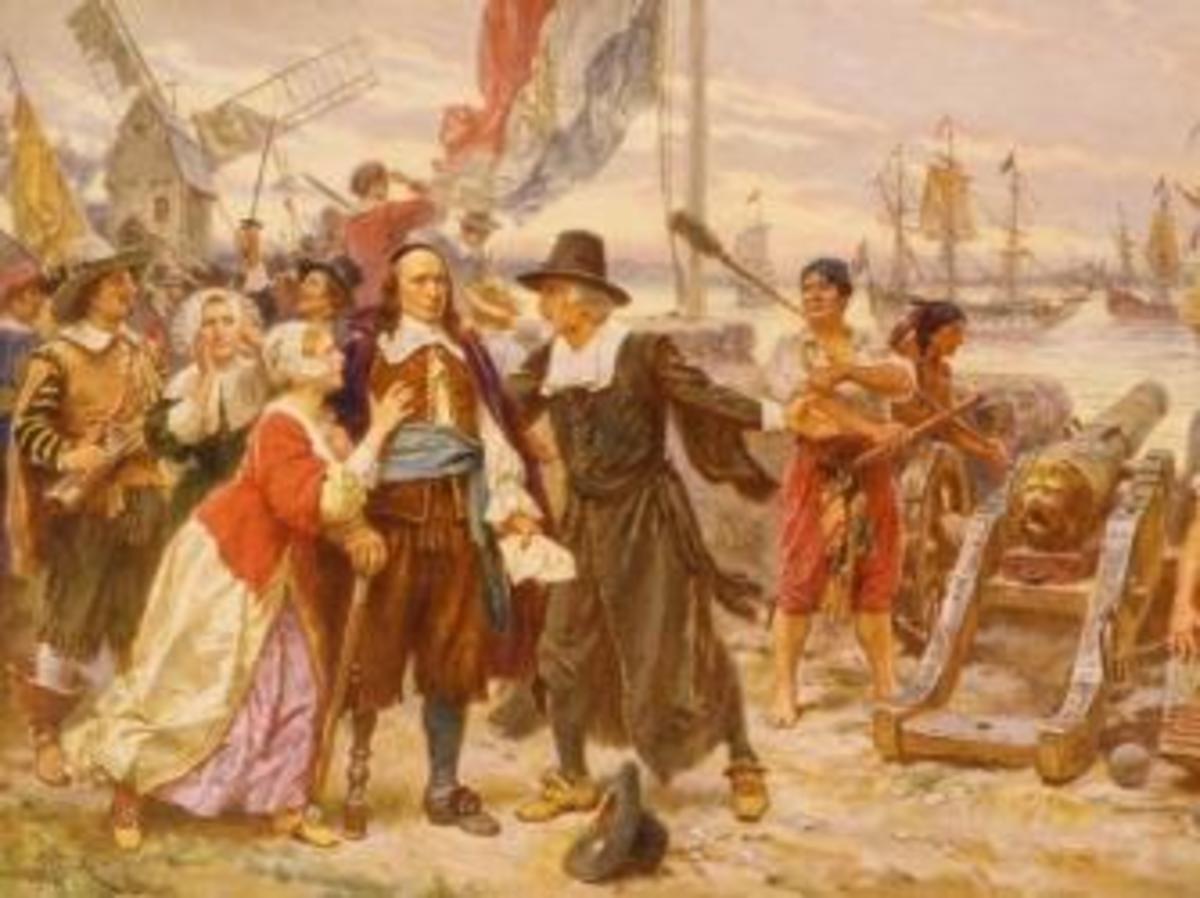The English did not immediately follow up the work of the Cabots. Instead, they put their energies into breaking into the Spanish trading monopoly. In 1562 John Hawkins started the English slave trade; his nephew, Francis Drake, reached the Pacific and claimed California for England under the name of New Albion.
Drake returned to London by the Pacific and Indian oceans, completing the first English circumnavigation of the globe (1577-1580). Under Sir Humphrey Gilbert (c. 1539-1583) in 1583 the English staked out a claim to Newfoundland, which gave them a share in the great fishing grounds off northeastern North America.
In 1584 Sir Walter Raleigh (c. 1552-1618) unsuccessfully attempted to found a settlement on Roanoke Island (in present-day North Carolina) in an area the English named Virginia, after their Virgin Queen, Elizabeth. Early in the next century the English established two permanent footholds at Jamestown in Virginia (1607) and at Plymouth on Massachusetts Bay (1620). Both were established by chartered trading companies with headquarters in England; both cherished high hopes that they would find great stores of precious metals. Both were disappointed in these hopes and only just managed to survive the years of initial hardship.
Tobacco, first cultivated in 1612, and John Smith (1580-1631), explorer and propagandist for colonization, saved the Virginia colony; furs (notably beaver), salted cod, and Calvinist determination saved Plymouth. Both colonies gradually built up an agricultural economy supplemented by trade with the mother country and the West Indies. Neither received more than a few tens of thousands of immigrants from abroad. Yet both these and the later colonies expanded by natural increase in a country of abundant and productive land. By 1763 there were fourteen mainland British colonies with nearly 3 million inhabitants.
Before these English mainland colonies could be secure, two foreign groups had to be pushed out. The Dutch had founded New Amsterdam (1626) at the mouth of the Hudson and had begun to push into the fur trade. This made them rivals of the English and of the French, farther north in Canada. In their wars with England in the 1660s, however, the Dutch lost New Amsterdam, which was annexed by the English in 1664 and renamed New York.
The Swedes founded Fort Christiana (1638) on the Delaware near present-day Wilmington. But New Sweden was never a great enterprise and in 1655 was absorbed by the Dutch. Pennsylvania, chartered to the wealthy English Quaker William Penn (1644-1718) in 1681, replaced the Swedes and Dutch on the Delaware.
The arch of colonies, in which Pennsylvania formed the keystone, reached from Nova Scotia to Georgia and numbered fourteen, each founded separately and each with its own charter. New England was for the most part settled by Calvinist Independents (Congregationalists), committed to local self-government and distrustful of landowning aristocracy. The southern colonies were settled for the most part by Anglicans used to the existence of social distinctions and to large estates. In Virginia the Church of England became the established church; in Massachusetts the Puritan Congregationalists set up their own state church. Geography, climate, and a complex of social and economic factors drove the South toward plantation monoculture of tobacco, rice, indigo, or cotton and drove New England and the Middle Colonies toward small-scale farming, industry, and commerce by independent farmer-owners and artisans.
The colonists came from an England in which the concept of freedom of religion was only beginning to emerge. It was quite natural for the Virginians and the New Englanders to set up state churches. Yet these immigrants represented too many conflicting religious groups to enforce anything like the religious uniformity that prevailed in the Spanish colonies or in French Canada.
Moreover, some of the colonies were founded by groups that from the first practiced religious freedom and separated church and state. In Pennsylvania, founded by Quakers who believed firmly in such separation; in Maryland, founded in part to give refuge to the group most distrusted at home, the Catholics; in Rhode Island, founded by Roger Williams (c. 1603-1683) and others unwilling to conform to the orthodoxy of Massachusetts Bay—in these colonies there was something like religious freedom.
The seeds of democracy existed, although the early settlers readily accepted class distinctions. No formal colonial nobility ever arose, however, partly because land was relatively cheap; and the early tendency to develop a privileged gentry or squirearchy in the coastal regions was balanced by the freedom of the frontier and by careers open to talent in the towns. Government by discussion was firmly planted in the colonies from the start, and all of them had some kind of legislative body.
This was the critical difference between the English colonies in the New World and the Spanish and French colonies. In Spain and France the home governments were already centralized bureaucratic monarchies; their representative assemblies were no more than consultative bodies with no power over taxation. Royal governors in Spanish America and in New France could truly dominate their provinces. But England was a parliamentary monarchy. Though the Crown was represented in most colonies by a royal governor, the English government had no such extensive bureaucracy as the Spanish and French had.
Royal governors in the English colonies had hardly even a clerical staff and encountered great difficulty in raising money from their legislatures. Furthermore, in all the colonies the established landowners, merchants, and professionals participated not only in colonial assemblies but also in local government. Finally, the settlers brought with them the common law of England, with its trial by jury and its absence of a highly bureaucratic administrative code.

